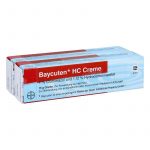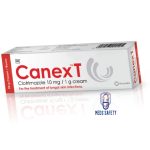Can I Use Clotrimazole And Hydrocortisone Creams Together For Skin Conditions?

Drug-drug interactions occur as a consequence of the complex interplay between various medications, where two or more drugs interact with one another in ways that can either enhance or diminish their intended effects. This phenomenon is not limited to a particular class of drugs; rather, it encompasses a broad spectrum of pharmaceuticals, including prescription drugs, over-the-counter (OTC) medications, and even illicit substances. The potential consequences of these interactions underscore the importance of considering the totality of a patient’s drug regimen to ensure their well-being.
One crucial factor in determining the likelihood of drug-drug interactions is the concept of a drug’s therapeutic range. This refers to the window between the minimal dose required for a therapeutic effect and the dose that could lead to harmful or toxic effects. Drugs with a narrow therapeutic range possess only a slight margin of separation between beneficial and lethal dosages. This precarious balance renders them more susceptible to serious drug interactions, as even subtle alterations in their metabolism or action can result in significant consequences.
The efficacy of medications can be compromised when one drug interferes with the intended mechanisms of another. For instance, one drug might accelerate the breakdown of another in the body, leading to reduced effectiveness. Conversely, a drug might inhibit the metabolic pathways of another, causing its levels to accumulate to potentially dangerous levels. This intricate dance of pharmacological effects necessitates a comprehensive understanding of how different drugs interact, enabling healthcare professionals to anticipate and mitigate potential complications.
Furthermore, the amalgamation of drugs with similar effects can amplify the adverse reactions associated with those effects. When medications with shared side effects are taken simultaneously, the combined impact can intensify these adverse events. For example, if two drugs both have the potential to cause dizziness, taking them together could magnify the likelihood and severity of this side effect, thereby posing risks to patient safety and well-being.
When it comes to addressing skin conditions such as fungal infections and inflammation, a variety of topical treatments are available to provide relief. Two commonly used creams are clotrimazole and hydrocortisone, each offering distinct properties. But can these creams be used together, and what factors should be taken into account? In this article, we delve into the benefits and considerations of combining clotrimazole and hydrocortisone creams for dermatological concerns.
Understanding Clotrimazole and Hydrocortisone
1. Clotrimazole Cream: Clotrimazole is an antifungal medication that is used to treat a range of fungal infections, including athlete’s foot, ringworm, jock itch, and yeast infections. It works by inhibiting the growth of fungi and preventing them from multiplying. Clotrimazole is available in various formulations, including creams, powders, and sprays, making it suitable for different areas of the body.
2. Hydrocortisone Cream: Hydrocortisone is a mild corticosteroid that has anti-inflammatory properties. It is commonly used to alleviate itching, redness, and swelling associated with various skin conditions such as eczema, dermatitis, and allergic reactions. Hydrocortisone creams are available over-the-counter and are usually safe for short-term use.
Can you use clotrimazole and hydrocortisone creams together?
Yes, in certain cases, using clotrimazole and hydrocortisone creams together might be appropriate, In fact, some medication like Baycuten HC is a combination of both clotrimazole and hydrocortisone.
Studies have shown that even in children the combination of 1% clotrimazole and 1% hydrocortisone cream is very effective in the treatment of infants with napkin dermatitis. It improves symptoms of erythema (skin redness), irritation, and pustulation (formation of pus-filled lesions). However, it is important to proceed with caution when combining these creams and follow professional guidance:
Combination Benefits
- Addressing Multiple Symptoms: When a skin condition involves both fungal infection and inflammation, using both creams can provide relief from itching, swelling, redness, and underlying fungal growth.
- Comprehensive Treatment: The antifungal action of clotrimazole targets the root cause, while hydrocortisone addresses discomfort and inflammation on the skin’s surface.
Professional Guidance
Before combining any medications, it is essential to consult a healthcare professional, preferably a dermatologist. They can evaluate your specific condition, assess the severity, and recommend the most appropriate treatment approach.
Potential Considerations
- Short-Term Use: Combining these creams might be suitable for short periods under medical supervision. Prolonged use, however, may increase the risk of side effects, such as skin thinning or irritation.
- Risk of Misdiagnosis: Self-diagnosis can lead to using the wrong treatment. Proper diagnosis is crucial to ensure the selected treatment is effective and safe.
The combination of clotrimazole and hydrocortisone creams can offer comprehensive relief for skin conditions involving both fungal infections and inflammation. However, it is paramount to consult a healthcare professional before using these creams together, as well as to follow their recommendations closely. By approaching treatment with professional guidance and awareness, you can address your skin concerns effectively while minimizing the risk of adverse effects. Remember, your skin’s health deserves proper care and attention, and seeking expert advice is the first step towards achieving optimal results.





